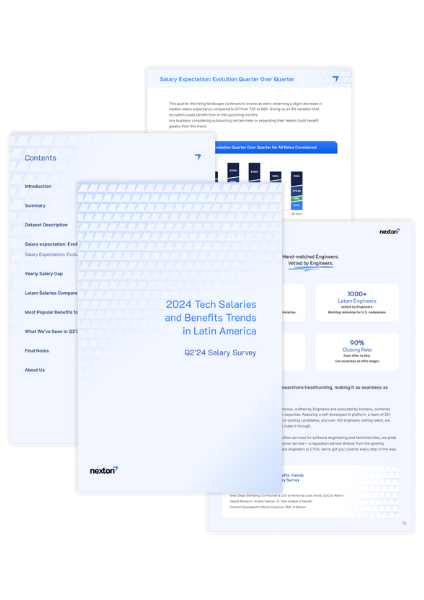We live in a hyper-visual age, where showcasing your experience through a portfolio can have a much greater impact than a traditional resume.
As you get ready to land your next client or design job, it’s essential to thoughtfully craft your senior UX design portfolio. Far from being just a list of recent projects, your portfolio should tell the whole story of your senior UX work, including your ability to manage people and create design strategies. Let’s go through the elements you’ll need to make your senior UX design portfolio stand out from the crowd.
Tips for crafting a winning senior UX design portfolio
Here are some top ways to plan and create a successful senior UX design portfolio.
1. Let your personality shine through
First things first, your portfolio should be all about you. Don’t be afraid to show your personality to potential clients and employers. These days, companies are looking for “culture fit” as much as hard skills. Add touches to your portfolio that match the way you wish to present yourself.

2. Add storytelling for the big picture
In a junior UX portfolio, recent projects often take the spotlight. Yet, you need to do more than just explain your past work. To show off your senior UX skills, you should tell the story of the case studies you chose.
Every portfolio item should include the business goals, your design process, the senior skills you utilized, analysis of alternative designs, and the people problems you resolved. Try to give the big picture here, so that clients and employers see that you go above and beyond just great UX skills.
3. Include data and results
In addition, you should try to incorporate data and results whenever possible. Impact is a hot-button topic in the UX industry and showing some metrics about how your design improved customer experience is an excellent idea.
Pro tip: For all projects and data, make sure you have permission to share this information. If you signed an NDA, for example, you definitely shouldn’t discuss the project publically. Sometimes you can anonymize details, but proceed with caution.

4. Hand-select visuals for great effect
You’re a designer and your portfolio should look great. However, try to avoid fluffy imagery. Instead go for visuals that showcase your senior UX skills, such as user flows, sketches and wireframes, moodboards, and the final product.
5. Stay short and sweet
There’s no need to write a novel when creating your portfolio. For big projects, you can even break them into smaller parts. A redesign project can be separated into different stages, including the skills and challenges you faced at these distinct points.
At the same time, don’t try to cram all your work into your portfolio. Be selective about projects that display your wide range of senior UX skills. Moreover, it’s important to include the projects that will help you stand out in the particular niche or industry you’re focusing on, or the ones related to the type of job you’re looking for.
6. Showcase senior skills
Most importantly, you should ensure your portfolio is spotlighting your senior UX skills. Drawing and coding abilities are great, but you need to be thinking at a higher level to land a senior job. Most senior UX skills involve business, people and strategy management, such as:
- Managing cross-department teams and stakeholders
- Mapping UX solutions to business goals
- Shaping product strategy and decision-making
- Undergoing company design advocacy
- Utilizing industry-best tools and best practices
- Showing industry involvement, i.e. workshops and mentoring
These are the areas you should try to hit home when selecting and crafting portfolio items.

Things to avoid in your senior UX design portfolio
Design portfolios often fall into these pitfalls. Ensure high impact by avoiding these common errors.
1. Too many projects
If you add too many projects and details, you risk confusing potential clients and employers. Select 3 to 5 projects that really showcase your skills and leave it at that.
2. Not tailored to the role
All your senior UX case studies should relate to the job you’re trying to get. Avoid work that doesn’t directly apply, or your potential clients will be scratching their heads about what you know how to do.
3. Confusing structure
Stay organized throughout your portfolio. Create a hierarchy for how to format the portfolio items. Use headers, short paragraphs and bullet points. The clearer the information, the greater the impact.

4. No critical analysis of design decisions
Don’t forget to provide critical analysis, since they’re vital to any senior UX role. For every portfolio item, analyze how decisions were made, what alternatives there were, and a final discussion on the pros and cons of your choices. This type of critical retrospective is key for senior UX designers who need to plan design strategies.
Land amazing jobs with your senior UX design portfolio
With these hot tips, you’ll be able to craft a high-impact senior UX design portfolio that lands you amazing new clients and design jobs.
If you’re interested in becoming a remote senior UX designer with a U.S. company, reach out to Nexton! We specialize in connecting technology professionals based in Latin America with exciting remote job opportunities in the tech industry –including for senior UX designers.


